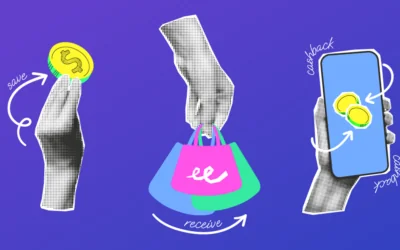Banks now have a unique opportunity to build on the trust and satisfaction that they have earned during the pandemic with their retail customers, and improve their customer financial management platforms.
The pandemic has actually helped banks around the world to improve their image. It’s well documented that after the 2007-08 Global Financial Crisis, customer trust in their financial institutions plummeted. Public perception was that banks were largely responsible for the crisis and did little to help their customers in its wake. This time it was very different though.
Banks really stepped up in a big way to provide digital services to their customers when restrictions and lockdowns meant that in-branch banking was no longer possible. According to one retail banking study, 63% of people said that their bank “completely supported them during the pandemic, which drove an 86% increase in likelihood of reusing that bank.”
A unique time for banks to build on their enhanced standing
Banks now have a unique opportunity to build on the trust and satisfaction that they have earned during the pandemic with their retail customers by helping them improve their financial wellbeing.
Merely thinking about their personal finances makes 50% of Americans anxious, whereas the average financial literacy percentage in Europe is 52%. Therefore, there are large swathes of populations with little to no financial literacy. This is where banks can come in, as they are naturally able to position themselves as experts. And even among the financially literate, understanding financial wellbeing practices such as budgeting is one thing, but actually executing on them is another. Again, this represents an outstanding opportunity for banks, to improve the customer financial management, engender a closer, more personable customer relationship, and ultimately, to drive their revenues.
Through digital banking methods in particular, banks can prompt customers to take certain actions. With data-driven and behavior analytics technology in place, they can understand each customer’s financial situation, needs, and wants far more precisely. With advanced automation capabilities, they are able to identify specific customer events and distribute highly personalized services, helpful advice, or product offers. They can even use omnichannel technology to target each customer on their favorite channel(s).
Banks: Here are 5 Ways to Help Customer Financial Management
Financial wellbeing is made up of interconnected areas, such as budgeting, saving, and investment. But most retail customers are far from achieving optimal personal financial management. In recent years, fintech companies have sought to fill this gap and now banks can seize the initiative. Here are five areas that banks can focus on to truly help their customers.
1. Proactively help customers to budget
Some personal banking interfaces already have budgeting tools, but most people still struggle to budget effectively. In fact, 65% of people “have no idea how much they spent last month”. Banks can play a massive role in increasing the prevalence of consistent, effective budgeting among their retail customers. The banking branch was historically a reactive place of business: a customer would come in with a request and the banks would respond.
Now though, with the incredible power of digital technology available to banks, they can now flip this approach on its head by prompting customers to budget. With effective data analysis and automation, banks can tailor budgeting messaging and service suggestions based on each customer’s profile and transaction history.
2. Help them understand basic investing principles
Banks can quite easily identify if a customer invests and if they are in a position to. They can also get a good idea if a customer demonstrates an understanding of investment principles. The reality is that a lot of people are confused about investing, including the belief that a minimum and considerable amount is needed to start, which is one reason why 55% of Americans aren’t investing their money at all.
With the ability to now automate hyper-personalized product distribution offers, they can get an excellent idea as to each customer’s investment needs. And this can include all retail customers, from those with an average amount of disposable income per month to more affluent customers, and low-income customers too. By helping customers understand their possibilities to invest and indeed, how basic investing works, it then opens the door for banks to offer the means to invest, by introducing their own investment options and/or offering personalized lending options to fund investment.
3. Help them automate payments into a savings account
Not every customer has a savings account to begin with. In Italy just 25% have one, in France 67%, and in the UK it’s 68%. Banks can launch campaigns for customers without a savings account to set one up. For low-income customers this applies too, as they can make savings deposits according to their means, however small.
Automating savings is connected to the first step, budgeting, as it forces customers to think of their money in a different way in the knowledge that a portion of it goes right out of their checking account each month and into their savings account. It is also a way to improve customer experience, by removing the step of manually transferring funds from one account to another. Most importantly of all, it ensures that customers do actually stick to their savings goals.
4. Help them with important financial planning
28% of households don’t have a financial plan. And 64% of homeowners don’t have enough home insurance. Put simply, most people don’t take appropriate care of their financial wellbeing in general. Banks can provide financial guidance and help their retail customers to plan their financial lives in the short, medium, and long term.
This includes helping customers ensure that their home, medical, and, if applicable, travel insurance provide appropriate coverage. And for the banks that are eager to go the extra mile, they could even proactively suggest alternative services or products compared to what their customers buy by automatically analyzing transactions.
Banks can also really help people think about how to optimally finance periods such as festive seasons and vacations, and making large purchases such as for a car or a home.
5. Offer personalized financial services and products
Of course, most retail banks offer a large range of personal financial products and services. From savings to budgeting, and from investing to lending, banks are in a position to meet virtually all financial needs of most retail customers.
To do so in this digital age, with increasingly tech savvy and more demanding customers though, a digital approach is required – one that places customer data at its core. Using data-led technologies, banks can offer a truly contextualized customer experience with hyper-personalized communication and product offer and provision.
Improving Customer Experience in Banking with Fintech
After having enhanced their standing with people in countries around the world during the pandemic, the time is now for banks to build a closer customer-centric relationship with their clientele. By using the right technologies, they can help their customers to understand and manage their finances in a markedly superior way.
Happier customers equates to a reduction in churn and a greater willingness to subscribe to additional banking services. To optimize CX execution and maximize performance, the technologies that banks integrate play a critical role. Through partnering with the right banking customer experience specialist fintech(s), banks are able to launch advanced, proven market-ready solutions faster.
Discover why banks around the world choose Strands as their fintech partner to take customer experience performance to the next level.



